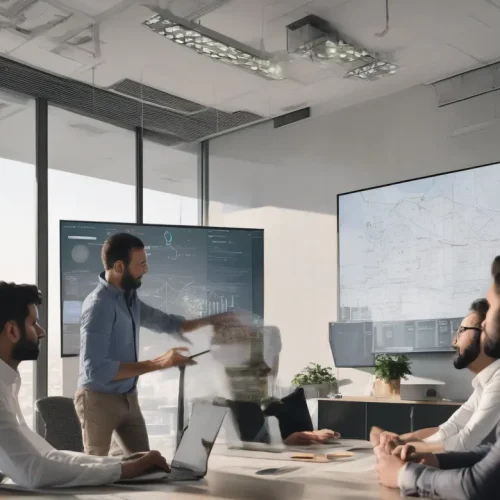Introduction: Navigating the AI-Driven SEO Landscape
Search Engine Optimization (SEO) is evolving rapidly, especially as Google’s artificial intelligence (AI) transforms how search results are generated and consumed. With innovations such as the Search Generative Experience (SGE) and intelligent crawlers powered by large language models (LLMs), the year 2025 calls for new strategies from webmasters and SEO professionals. Consequently, traditional keyword ranking is no longer enough. Instead, success now hinges on optimizing for AI’s deep content understanding, direct answer capabilities, and personalized results. To help navigate these changes, this comprehensive SEO checklist for Google AI 2025 outlines clear and actionable steps to thrive in today’s dynamic digital ecosystem.
Key Changes in Google’s AI-Powered Search for 2025
Google’s AI is reshaping search by:
- Understanding User Intent: Analyzing queries beyond keywords to deliver precise results.
- Direct Answer Modes: Displaying SGE summaries, Featured Snippets, and knowledge panels, reducing clicks to websites.
- Semantic Content Analysis: Prioritizing meaning and context over exact keyword matches.
- Personalized Results: Tailoring outcomes based on user history, location, and behavior.
- Advanced Crawling: Indexing complex, dynamic content like multimedia with LLMs.
Optimizing for these changes requires a focus on quality, relevance, and technical excellence to align with Google’s AI-driven algorithms.
Comprehensive SEO Checklist for Google AI 2025
To succeed in Google’s AI-driven search environment, follow these 10 actionable steps:
1. Prioritize Enhanced E-E-A-T (Experience, Expertise, Authoritativeness, Trustworthiness)
Google’s AI emphasizes E-E-A-T, valuing content from credible sources with real-world experience. Transparent authorship and trustworthiness are critical for ranking in 2025.
How to Optimize:
- Showcase author credentials with detailed bios and links to professional profiles (e.g., LinkedIn).
- Highlight certifications, awards, or industry recognition.
- Include user reviews and testimonials to build trust.
- Cite reputable sources to reinforce content authority.
- Ensure content reflects firsthand experience, especially for YMYL (Your Money or Your Life) topics.
2. Optimize for Semantic Search and User Intent
Google’s AI decodes user intent, prioritizing content that answers questions comprehensively. Exact keyword matches are less critical than addressing user needs.
How to Optimize:
- Conduct long-tail and semantic keyword research using tools like AnswerThePublic or Google’s “People Also Ask.”
- Incorporate LSI keywords and synonyms naturally.
- Create topic clusters with in-depth cornerstone content covering all angles of a subject.
- Use structured data (Schema Markup) to clarify content intent (e.g., article, FAQ, product).
3. Target AI Answer Modes (SGE and Featured Snippets)
SGE and similar features provide direct answers, often bypassing traditional links. Optimizing for these modes boosts visibility, even without clicks.
How to Optimize:
- Answer common questions concisely in the first 100 words of content.
- Use lists, tables, and bullet points for scannable formats.
- Ensure factual accuracy and update content regularly.
- Structure content with clear H2/H3 headings to signal key information.
- Align with Featured Snippet formats (e.g., “how-to” guides, definitions).
4. Deliver High-Quality, Comprehensive Content
AI penalizes thin or duplicate content, favoring in-depth, original material that fully addresses user queries.
How to Optimize:
- Create unique, value-driven content with fresh perspectives or data.
- Cover topics comprehensively, answering related questions within a single article.
- Use case studies, examples, or statistics to support claims (e.g., “80% of users prefer direct answers”).
- Update outdated content to maintain relevance and accuracy.
- Avoid keyword stuffing to ensure natural readability.
5. Enhance Technical SEO for Intelligent Crawlers
Google’s AI crawlers require a technically sound website to index content effectively, especially for dynamic and multimedia elements.
How to Optimize:
- Achieve fast page loading speeds (aim for under 2.5 seconds for Largest Contentful Paint).
- Implement mobile-first indexing with responsive design.
- Use clean, descriptive URL structures (e.g.,
/seo-checklist-2025). - Optimize robots.txt and sitemaps for efficient crawling.
- Fix crawl errors via Google Search Console.
- Meet Core Web Vitals standards (LCP, FID, CLS).
6. Leverage Structured Data (Schema Markup)
Structured data helps AI categorize content, increasing chances of appearing in rich results or SGE summaries.
How to Optimize:
- Apply relevant Schema types (e.g., Article, FAQPage, Product) using JSON-LD.
- Use Google’s Structured Data Markup Helper or WordPress plugins like Yoast SEO.
- Validate Schema with Google’s Rich Results Test.
- Update Schema regularly to reflect content changes.
7. Boost User Engagement Signals
AI interprets user behavior (e.g., dwell time, bounce rate) as indicators of content quality and relevance.
How to Optimize:
- Enhance UX with intuitive navigation and responsive design.
- Use clear CTAs to guide user actions (e.g., “Learn More,” “Subscribe”).
- Improve readability with short paragraphs, bullet points, and legible fonts.
- Implement strategic internal linking to keep users on-site.
- Encourage social shares to amplify visibility.
8. Optimize Images and Multimedia
Google’s AI excels at analyzing visual content, making image and video optimization critical for diverse search results.
How to Optimize:
- Use descriptive, keyword-rich file names (e.g.,
seo-checklist-2025.jpg). - Add accurate alt text with relevant keywords.
- Compress images for faster loading (e.g., WebP format).
- Apply VideoObject Schema for video content.
- Include captions and transcripts for accessibility and indexing.
9. Build Authoritative Backlinks
Links remain a strong signal of authority, with AI evaluating link quality and relevance more critically.
How to Optimize:
- Earn backlinks from high-authority, niche-relevant sites through guest posts or collaborations.
- Use descriptive anchor text aligned with content topics.
- Strengthen internal linking to distribute authority across your site.
- Avoid low-quality or spammy link-building tactics.
10. Prepare for Personalized Search Results
Google’s AI tailors results based on user data, requiring content that appeals to diverse audience segments.
How to Optimize:
- Develop audience personas to address specific needs and pain points.
- Create content for different user intents (e.g., informational, transactional).
- Use localized keywords for region-specific audiences.
- Monitor user behavior via analytics to refine content strategies.
The Impact of AI on SEO in 2025
Google’s AI advancements, like SGE and enhanced crawling, reduce reliance on traditional SERP clicks, with 25% of searches in 2024 yielding zero clicks due to direct answers. This shift challenges websites to prioritize visibility in AI-generated summaries while maintaining organic traffic. By focusing on E-E-A-T, semantic relevance, and technical optimization, sites can adapt to these changes and remain competitive.
Future Outlook: Embracing AI-Driven SEO
The future of SEO lies in aligning with AI’s ability to understand user intent and content context. Continuous learning, experimentation, and adaptation are essential as Google’s algorithms evolve. By implementing this checklist, webmasters can future-proof their sites, ensuring visibility in SGE, rich results, and personalized searches.
Conclusion: Thrive in Google’s AI Era
In 2025, the SEO landscape is shifting from keyword-centric tactics to user-focused, AI-optimized strategies. To adapt effectively, this comprehensive SEO checklist for Google AI 2025 equips you with the tools needed to enhance E-E-A-T, target semantic search, and leverage key technical optimizations. By implementing these approaches, you can boost your site’s visibility, engage users more effectively, and ultimately thrive in the evolving, AI-driven search ecosystem.






